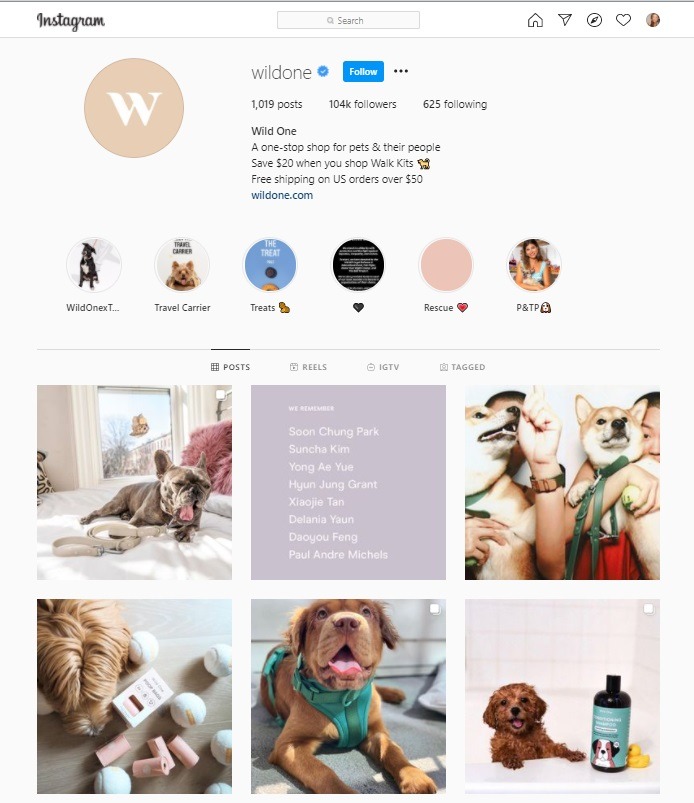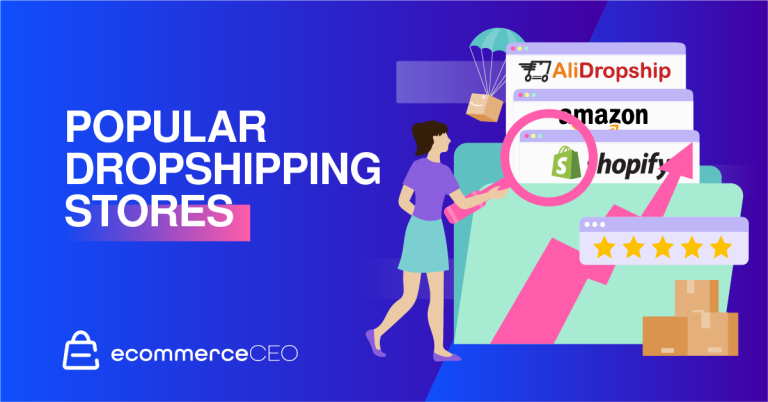Looking to scale your eCommerce brand and grow your online pet supplies business? You’ve come to the right place. Online pet product sales grew by a whopping 63% during the peak of Covid-19 in 2020, and are expected to grow to a $350 billion industry by 2027.

[Source: Common Thread Co]
Pet supply stores have an average conversion rate of 1.75. There is no doubt that there are a lot of online pet business opportunities. The trick is having the right online pet store business plan to help your business grow the right way.
That’s where we come in! In this post, we will take you through:
- Six key steps to growing and scaling your online pet supplies business to its full potential.
- Four winning online pet store examples and why they rock.
Step 1: Stay on Top of Pet Market Trends and New Best-Selling Products
As we saw in the graph above, online pet food sales grew substantially last year. But food is only a fraction of what pet owners are looking for online. Pet accessories are huge right now, with trending products including cat beds, dog bowls, dog collars, and dog pens. However, pet opportunities expand beyond pet supplies, with the newest pet trend – personalized designer printed products – soaring to popularity.

[Source: PupSocks]
Staying on top of new trends and riding these trends to new categories and marketing messaging for your store is key to dominating the pet supplies and accessories niche – and there is still a lot of potential for new niches.

[Source: Common Thread Co]
To stay ahead of trends in your niche, you will need to:
- Keep a close eye on forums and social media trends
- Follow popular marketplaces
- Sign up for eCommerce trend blogs and new product review sites
Step 2: Use Benchmark Hero for a Full Store Audit to Spot Growth Weaknesses
Before you can plan where you are going, you need to know where you stand in your niche and against your most dominant competitors. When auditing your store, you will want to assess:
- Store technical performance: Is your store optimized for search engines and customers alike? Are your upload speeds affecting your sales?
- Trustworthiness: Do potential customers find your brand trustworthy – not only to encourage first-time purchases, but to increase the retention needed to grow your business long-term?
- Shopping experience: Is your store’s shopping experience seamless from start to finish? Are you running the right onsite promotions at the right time?
- Marketing: Is your eCommerce marketing strategy set up to optimize in real-time, and is it scaled for long-term growth? Are you using the right platforms and strategies to help you scale your business to pro-level?
That’s where this free eCommerce store audit tool, Benchmark Hero, is super handy. It saves you the massive amount of time needed for a manual audit. Not only is it free, but it will allow you to assess customer value, technical specifications, and shopping experience in minutes. Its system will audit your site and compare its performance to seven-figure sites to determine where you are and how you can improve your store today.
[embedded content]
Step 3: Go All-In With Long-Term Loyalty and Retention Strategies
Now that you have a better idea of market trends and know-how your store compares to other stores in your niche, it’s time to dig deeper into selling strategies. The very first point of call should be retention.
As any established brand owner knows, converting existing customers is not only cheaper but imperative for long-term growth. People buy from brands they know and trust, and without retention, you can’t grow your pet business to eight figures and beyond.
The key elements to a successful retention strategy include:
- Ensuring top-notch customer service
- Creating a unique and seamless customer experience
- Offering high-value insights and free content to help customers
- Engaging directly with customers across all channels
- Personalizing promotions
- Building loyalty programs
This is something Petco understands very well. Not only is their shopping experience well above average, but they offer fantastic rewards for returning and VIP customers.

Step 4: Engage With Customers and Mine for UGC Gold
The pet market and its customers offer a unique way to connect with potential shoppers and market. Why? Because pet parents are engaged and actively looking for topic experts.
This means that as a pet supplies or accessory brand that engages back with potential shoppers and customers and continuously rewards or educates, you have a good chance of turning first-time buyers into passionate customers.
It is also a niche that offers huge UGC potential that will help drive shopping experience, marketing, and retention strategies.

[Source: EZ Pet Life]
Here are some pet supply or accessory store UGC collection ideas to get you started:
- Invest in influencer marketing strategies
- Post and share product reviews
- Host pet fashion shows
- Organize a social brand takeover
- Feature a pet of the month on your store or social channels
- Use TikTok Hashtag Challenge Ads
Step 5: Take Advantage of Niche Viralablity Potential
There’s no better guilty pleasure than distracting oneself with funny cat videos. Since the birth of the internet, fun pet content has been a viral sensation. This makes the potential for viral content within the pet niche higher.
You only have to look at the growing number of pet influencers to see opportunities that your brand could capitalize on to drive reach and awareness.

There is no denying that humans spend a lot of internet time watching and sharing animal content, giving brands many opportunities to use content marketing to boost reach and create buzz. A good example of a pet supplies brand that capitalizes on this viralability is The Farmer’s Dog.
Another winning online eCommerce pet accessory store to emulate in terms of content marketing is Wild One.

While you’re at it, check out their store UX and product images – it’s eCommerce inspiration on steroids!

Step 6: Upgrade Your eCommerce Digital Marketing Strategy to Pro Level
Another critical step in setting up your store for huge growth is assessing and increasing your digital marketing presence. This will help you scale conversion rates, reach new customers, increase retention, and build brand equity.
The trick is getting the balance just right to create a marketing strategy that suits your niche, target shopper, and brand. It also means investing in a solid foundation for your strategy by creating a strong brand identity.
A well-optimized PPC marketing and management plan should make allowances for growth. At an absolute minimum, channels worth testing should include:
- Google remarketing campaigns
- Google Dynamic Search Ads (DSAs)
- Google Shopping campaigns
- Google responsive search ads (RSAs)
- Facebook collection ads for eCommerce
- Instagram ads
- Facebook dynamic product ads (DPAs)
Managing and growing your PPC strategies can feel like a full-time job, but it’s vital for scaling your pet business long-term. To truly reach eight-figures or higher, you’re going to need to invest in help.
Either hire a full-time manager or agency, or take advantage of eCommerce advertising powered by AI which offers fully-optimized Google Search & Shopping, YouTube, remarketing, smart display, Facebook & Instagram acquisition, and retargeting ads.
[embedded content]
If you are managing your digital marketing, you’ll want to visit these pro-level PPC and advertising guides:
- 20+ Google Ads Tips and Tricks Every eCommerce Seller Needs to Know
- Winning eCommerce Facebook Strategy for 7-Figure Stores
- SMS Marketing for eCommerce
- 5 Quick Tips for Creating eCommerce YouTube Video Ads That Convert [+ Examples]
- How to Use YouTube Ads to Recover Abandoned Carts in 6 Steps
- How to Scale a Facebook Ad Campaign [Video]
4 Winning Online Store Examples and Why They Rock
Online Pet Store Example #1: How Chewy Gives Back
If you’re looking for the ultimate example of creating a seamless online store shopping experience for your pet store, then look no further than Chewy.

This user-friendly store is clean and simple despite their wide category range, ensuring their site is easy to navigate and products are easy to find.
In short, there is a lot to love about this pet store example. However, what really stands out from their competitors is their giveback program.

To incorporate a giveback program into your store, you will need to follow these steps:
- Choose the right cause for your niche – one that your target market really cares about.
- Promote giveback programs in an authentic, organic way without it coming off as shameless brand pushing.
Online Pet Store Example #2: Going Niche With Summer Pawz
Summer Pawz is an excellent example of how you can market to a tiny niche within a smaller category and still grow your pet store long-term.

Summer Pawz sells in a very niche market of dog pools, sprinklers, and mats for summer. Although their category list is small, they focus on making sure their customers are satisfied.

Online Pet Store Example #3: Amazingly Cat Ups Content Marketing Game
Amazingly Cat does a great job staying on top of seasonal celebrations and trending topics, keeping its store and product lists fresh.

However, they don’t just capitalize on seasons and events for onsite promotions; they extend this into their robust content marketing strategy, including their blog and social media content.


Online Pet Store Example #4: Meowingtons Crosses Niches
Meowingtons is a prime example of an eCommerce brand that can cross various niches, including human apparel and pet products. The trick is finding where this blend makes sense for your target audience.

What really stands out is their Milton Comic Club which they use to build their subscribers lists, giving a big dose of extra value to their potential customers and returning shoppers alike.

—
There you have it, six quick steps for growing your online pet store brand to peak performance and four pet store examples to inspire you.
Are you looking to scale up your eCommerce online marketing for your store? Check out Traffic Booster for optimized campaigns in real-time without the hefty agency fees.

Nicole Blanckenberg
Nicole is a content writer at StoreYa with over sixteen years experience and flair for storytelling. She runs on a healthy dose of caffeine and enthusiasm. When she’s not researching the next content trend or creating informative small business content, she’s an avid beachgoer, coffee shop junkie and hangs out on LinkedIn.
Comments
comments
Powered by Facebook Comments






